google.load(“elements”, “1”, {packages: “transliteration”});
The word “tiger” is taken from the Greek word “tigris”, which is possibly derived from a Persian source meaning “arrow”, a reference to the animal’s speed.
The tiger (Panthera tigris), a member of the Felidae family, is the largest of the four “big cats” in the genus Panthera. Native to much of eastern and southern Asia, the tiger is an apex predator and an obligate carnivore. Reaching up to 3.3 metres (11 ft) in total length, weighing up to 300 kilograms (660 pounds), and having canines up to 4 inches long,the larger tiger subspecies are comparable in size to the biggest extinct felids. Aside from their great bulk and power, their most recognisable feature is a pattern of dark vertical stripes that overlays near-white to reddish-orange fur, with lighter underparts. The most numerous tiger subspecies is the Bengal tiger while the largest is the Siberian tiger.
Diet:
Over much of the tiger’s broad geographic range, wild pig, wild cattle and several species of deer are its major prey. All prey are forest or grassland ungulates that range in size from 65 to 2,000 pounds (30-900 kg). Typically, wild tigers gorge themselves on fresh kills, and can eat as much as 40 pounds (18 kg) of meat at one time. The tiger will not eat again for several days.
Following mating, the gestation period for tigers is approximately103 days. The male tiger does not stay with the female after mating, and does not participate in raising the cubs. The average litter size of tigers is 2 or 3 cubs (the largest is 5). One usually dies at birth. Once a tigress has mated and given birth to cubs, she will not come into estrus again until her cubs are between one and a half and three years of age, with enough skills to begin life on their own.
Tigers have a lifespan of 10–15 years in the wild, but can live longer than 20 years in captivity. They are highly adaptable and range from the Siberian taiga to open grasslands and tropical mangrove swamps.
Causes of being extinct :
They are territorial and generally solitary animals, often requiring large contiguous areas of habitat that support their prey demands. This, coupled with the fact that they are indigenous to some of the more densely populated places on earth, has caused significant conflicts with humans. Three of the nine subspecies of modern tiger have gone extinct, and the remaining six are classified as endangered, some critically so. The primary direct causes are habitat destruction, fragmentation and hunting.
Subspecies :
There are nine recent subspecies of tiger, three of which are extinct.
The Indochinese Tiger :
The Indochinese Tiger (Panthera tigris corbetti), also called Corbett’s tiger, is found in Cambodia, China, Laos, Burma, Thailand, and Vietnam. These tigers are smaller and darker than Bengal tigers: Males weigh from 150–190 kg (330–420 lb) while females are smaller at 110–140 kg (240–310 lb). Their preferred habitat is forests in mountainous or hilly regions. Estimates of the Indochinese tiger population vary between 1,200 to 1,800, with only several hundred left in the wild.
The Malayan Tiger (Panthera tigris jacksoni), exclusively found in the southern part of the Malay Peninsula, was not considered a subspecies in its own right until 2004. The new classification came about after a study by Luo et al. from the Laboratory of Genomic Diversity Study, part of the National Cancer Institute of the United States. Recent counts showed there are 600–800 tigers in the wild, making it the third largest tiger population, behind the Bengal tiger and the Indochinese tiger. The Malayan tiger is the smallest of the mainland tiger subspecies, and the second smallest living subspecies, with males averaging about 120 kg and females about 100 kg in weight.
The Sumatran Tiger :
The Sumatran Tiger (Panthera tigris sumatrae) is found only on the Indonesian island of Sumatra, and is critically endangered. It is the smallest of all living tiger subspecies, with adult males weighing between 100–140 kg (220–310 lb) and females 75–110 kg (170–240 lb).
The Siberian tiger (Panthera tigris altaica), also known as the Amur, Manchurian, Altaic, Korean or North China tiger, which is the most northernmost subspecies, is confined to the Amur-Ussuri region of Primorsky Krai and Khabarovsk Krai in far eastern Siberia, where it is now protected. The largest subspecies of tiger, it has a head and body length of 160–180 cm for females and 190–230+ cm for males, plus a tail of about 60–110 cm long (about 270–330 cm in total length) and an average weight of around 227 kilograms (500 lb) for males.
The South China Tiger :
The South China Tiger (Panthera tigris amoyensis), also known as the Amoy or Xiamen tiger, is the most critically endangered subspecies of tiger and is listed as one of the 10 most endangered animals in the world. One of the smaller tiger subspecies, the length of the South China tiger ranges from 2.2–2.6 m (87–100 in) for both males and females. Males weigh between 127 and 177 kg (280 and 390 lb) while females weigh between 100 and 118 kg (220 and 260 lb).
Extinct subspecies
The Bali Tiger :
The Bali Tiger (Panthera tigris balica) was limited to the island of Bali. They were the smallest of all tiger subspecies, with a weight of 90–100 kg in males and 65–80 kg in females. These tigers were hunted to extinction—the last Balinese tiger is thought to have been killed at Sumbar Kima, West Bali on 27 September 1937; this was an adult female. No Balinese tiger was ever held in captivity. The tiger still plays an important role in Balinese Hinduism.
The Javan tiger (Panthera tigris sondaica) was limited to the Indonesian island of Java. It now seems likely that this subspecies became extinct in the 1980s, as a result of hunting and habitat destruction, but the extinction of this subspecies was extremely probable from the 1950s onwards (when it is thought that fewer than 25 tigers remained in the wild). The last confirmed specimen was sighted in 1979, but there were a few reported sightings during the 1990s. With a weight of 100–141 kg for males and 75–115 kg for females, the Javan tiger was one of the smaller subspecies, approximately the same size as the Sumatran tiger.
The Caspian Tiger :
The Caspian Tiger (formerly Panthera tigris virgata), also known as the Persian tiger or Turanian tiger was the westernmost population of Siberian tiger, found in Iran, Iraq, Afghanistan, Turkey, Mongolia, Kazakhstan, the Caucasus, Tajikistan, Turkmenistan, and Uzbekistan until it apparently became extinct in the late 1950s, though there have been several alleged more recent sightings of the tiger.Though originally thought to have been a distinct subspecies, genetic research in 2009 suggest that the animal was largely identical to the Siberian tiger.
Most beautiful Tigers..!!
In the public eye white, or more correctly, chinchilla tigers are perhaps the colour which is to be most admired. The correct term for these tigers is chinchilla albinistic: blue eyed, lacking in phaeomelanin, pale-coated, but having a pattern.
These tigers grow faster and heavier than their orange counterparts and with their pale ice blue eyes, white fur with chocolate stripes, pink noses and pink paw pads they are indeed a beautiful sight. Unfortunately, beauty brings a curse and with the white tiger that curse is one of extreme inbreeding. The beautiful white specimen shown at the top of this page displays some evidence of breeding depression in having crossed eyes.
What causes white tigers?:
A white tiger can only be born when both parents carry the unusual gene for white colouring. The double recessive allele in the genetic code only turns up naturally about once in every 10,000 births. For unexplained reasons it seems to occur only in the Bengal subspecies.
Reports of white Amur tigers are incorrect. These tigers are Bengals which have, at some point in time, been hybridised with the Amur subspecies, so polluting their genetic code. However, they must have the Bengal parentage to produce the white pelage.
There are only a small quantity of white tigers in existence and present numbers are put in the region of 500. With the inevitable inbreeding problems a debate continually rages over the wisdom of breeding this animal. White tigers, white lions, white peacocks, none are representative of their wild populations.
The Tiger Species Survival Programme has actively discouraged breeding white tigers because of their mixed ancestry. Most of these animals have been hybridised with members of other subspecies — usually of an unknown lineage.
Other organisations object to white tigers both because of the lack of genetic diversity and because it serves no practical conservation purpose.
Some opponents state that white tiger breeding only inflates the stud book entries for zoos and provides a popular exhibit which helps increase attendance and revenue.
The US$1,600 per year spent feeding each of these tigers is effectively being outlaid on two hundred or so pretty freaks. However, it must be admitted that there is a plus to this in that the money earned can be put towards saving all tigers and the white specimens earn more than they cost in revenue from the visiting public.
Occasionally you will hear people referring to white tigers from a subspecies other than the Bengal. These are hybrids and may occur if a zoo chooses to mate a white Bengal with a tiger from another subspecies; this then produces a white hybrid tiger.
The studbook for the purebred white Bengal tiger counts only 43 animals, the rest seen are of unknown heritage, or they are hybrids.
Myths surrounding the white tiger:
A common myth surrounding the white tiger is that they are from Siberia and their coat colour camouflages them in snow. This is incorrect.
The truth is that white tigers come from India and of the approximately forty purebred white tigers in captivity most remain in that country.
The white tiger is not a separate subspecies; it would perhaps be more accurate to call it an aberrant colouration. Because they are not a separate tiger type they are also not an ‘endangered species’.
Perhaps the most common myth is that white tigers are albinos, but without pigment they would also not have stripes, coloured noses and paw pads, and lip mottling. Their skin would be milky and not striped.
A little-known fact is that white tigers do not always have ice blue eyes; they may be green or amber. Again, this requires pigment in the eyes that an albino would not have.
Some historic myths also surrounded the white tiger:
Native princes of northern India considered them as rarities and prize specimens were kept in private zoos.
In the kingdom of Assam the belief existed that anyone sighting a white tiger would soon die. It’s a myth that remains today.
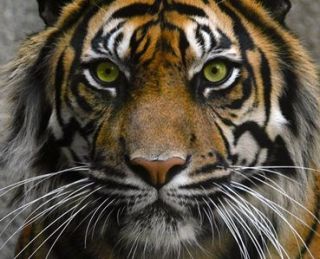
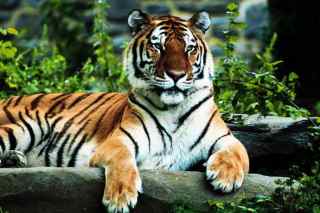



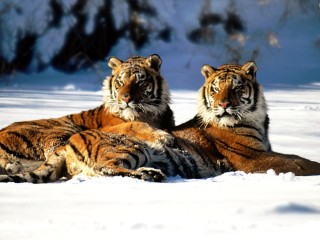

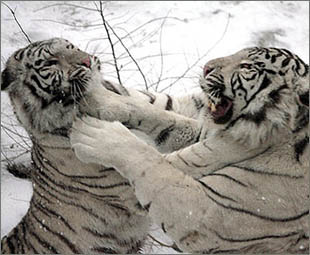



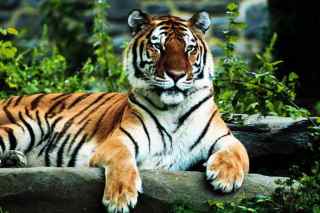

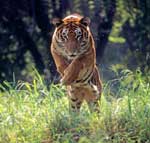










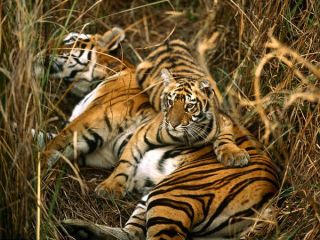


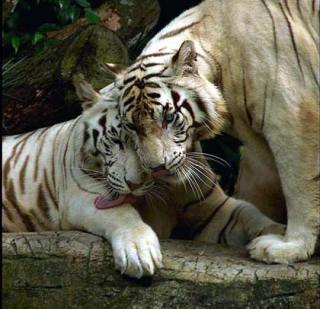


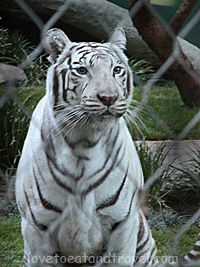

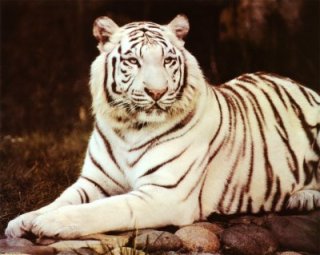

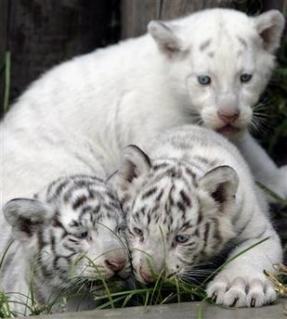



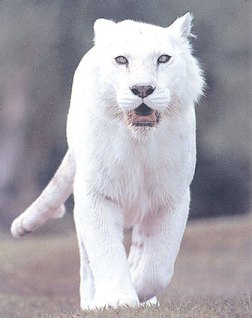





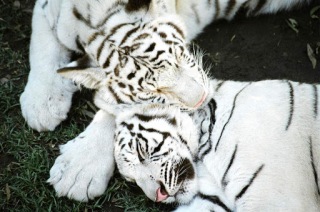
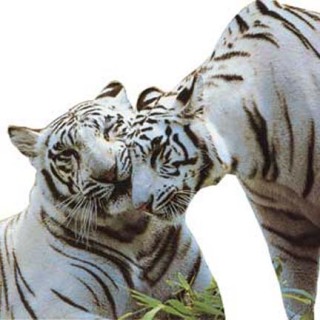




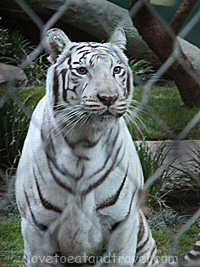


 Largest of the Penguins
Largest of the Penguins


